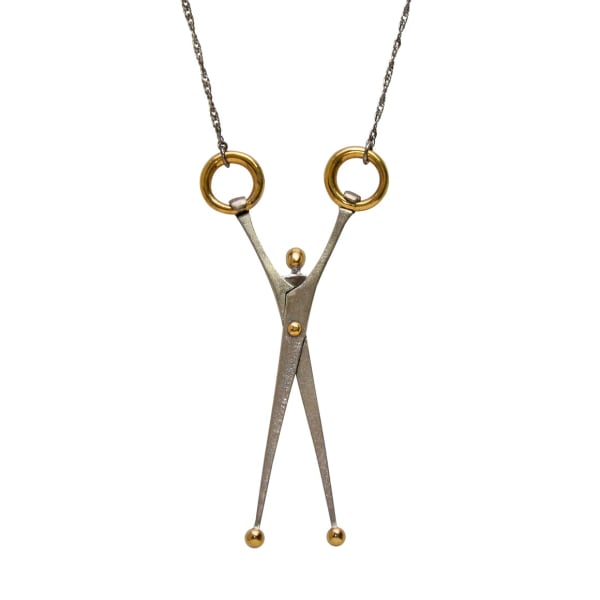Metal: Silver 925, Hoops 14KYG
Plating: RHW
It’s not a surprise that the “Circus Theme” has attracted the attention of the artists in the past. The multicolored brightness of the circus as a celebration is presented in the paintings of such artists as Degas, Renoir and Toulouse‐Lautrec.
The Artist here is following in the same direction, showing the fantastic world of the circus.
‘Parade‐allez’ is created by the riders with fluttering shirts, attracting the viewer by
ensuing the feel of the celebration on the brightly lit stage.
Yet, there is a major difference in this piece from the traditional presentation of the circus theme: the “jingle of the metal” is coming from the images of the “actors” themselves.
In this painting the Artist is following his metaphorical style with its unexpected
comparison and “likeness” of things. The image of an actor, juggling with forks, spoons and plates is morphed into the metallic object himself, playing with balls. The geometric and metallic structure of the “actors” is supported with sharp as knife blades and beams of light.
At the same time the beams of lights are “humanized’ with the “faces’ of the light projectors and their “gazes’ as they direct the viewer’s attention to the stage.
Parade: This term came from street shows. In addition to artistic entrance of all the
program participants (circus name 'parade‐allez'), the word 'parade' designated a comic dialogue, in which humorous content was often based on deafness and impercipience of the interlocutor. It was played by performers at the entrance for the purpose to attract people.








This website uses cookies
This site uses cookies to help make it more useful to you. Please contact us to find out more about our Cookie Policy.